CORSICAN CUISINE & A WHOLE LOT OF HISTORY 🇮🇹
A few of our favorite recipes and moments from our trip to Corsica
If we knew little about Sardinia before our trip, we knew even less about Corsica! Only that it’s a French island in the Mediterranean. Oh, and maybe somewhere deep in our brains, that Napoleon Bonaparte was born there (or maybe it just sounded familiar after a guide told us lol).
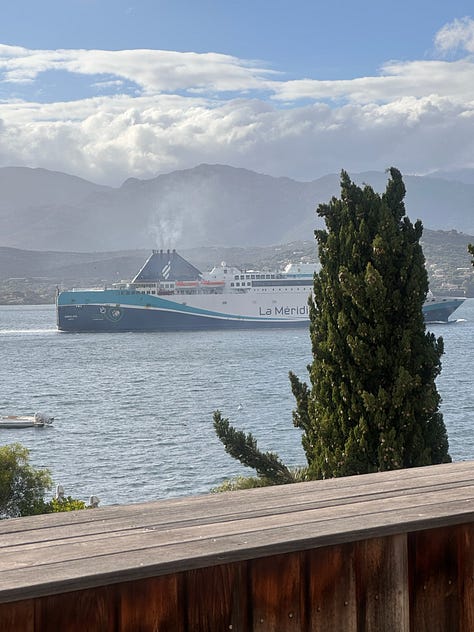


Well, we quickly learned a lot more. As soon as we entered the Bonifacio harbor from the ferry (a grand entrance reminiscent of a scene from Game of Thrones), we were greeted by imposing medieval architecture rising dramatically out of steep rocky cliffs that hung over the sea, rich green mountains, and a lot of history.

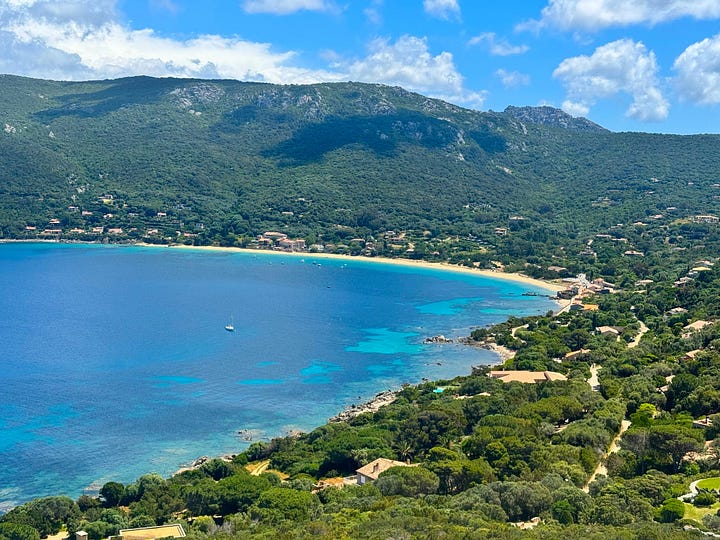
Fun fact, Corsica is often compared to the Caribbean islands, given its wild, mountainous, lush, untouched, rugged terrain and crystal clear blue water. A striking difference from the drier plains and rolling hills of Sardinia.
Now on to that history. Corsica has had a long, unique, and fierce past. Having been ruled by basically everyone, the island was said to be too important to ignore, but too tough to hold onto. Its strategic location in the Mediterranean caught the eye of all the major empires, but while the island’s rugged mountains made it a great natural fortress, it was frequently vulnerable to invaders, pirates, and raiders that passed through on the trade route from northern Africa to mainland Europe.
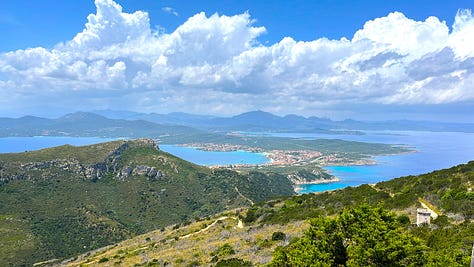
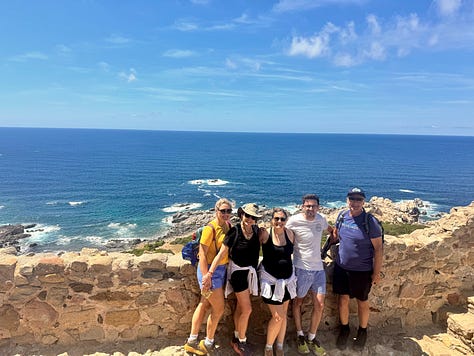

Not to mention, Corsicans are tough, independent mountain people who do not want to be told what to do. So, instead of protecting the island from threats, the ruling empires were usually too busy trying to control the Corsicans. All this led to centuries of rebellions, raids, and changing hands, until after ruling Corsica for 500 years, the Genoese empire had had enough and gave the island to France. And the next year, the most famous Corsican, Napoleon Bonaparte, was born (but that’s for another history lesson 👩🏻🏫).

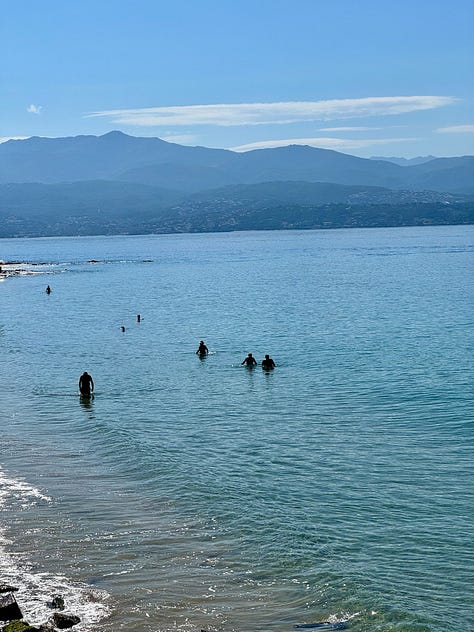
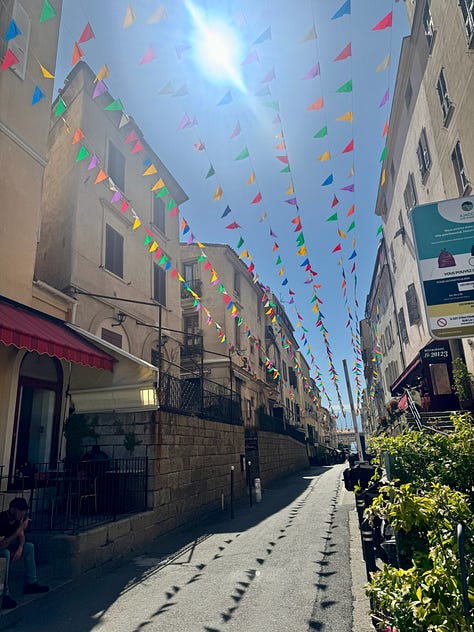
Through it all, though, the Corsican spirit and identity never went away 💪🏻. This island may be a French-speaking part of France, but Corsicans remain very independent with their own traditions, language, and, of course, food!
The influence of Corsica’s long, mixed history is very apparent in its cuisine, with a lot of Italian, French, and rustic island flair!

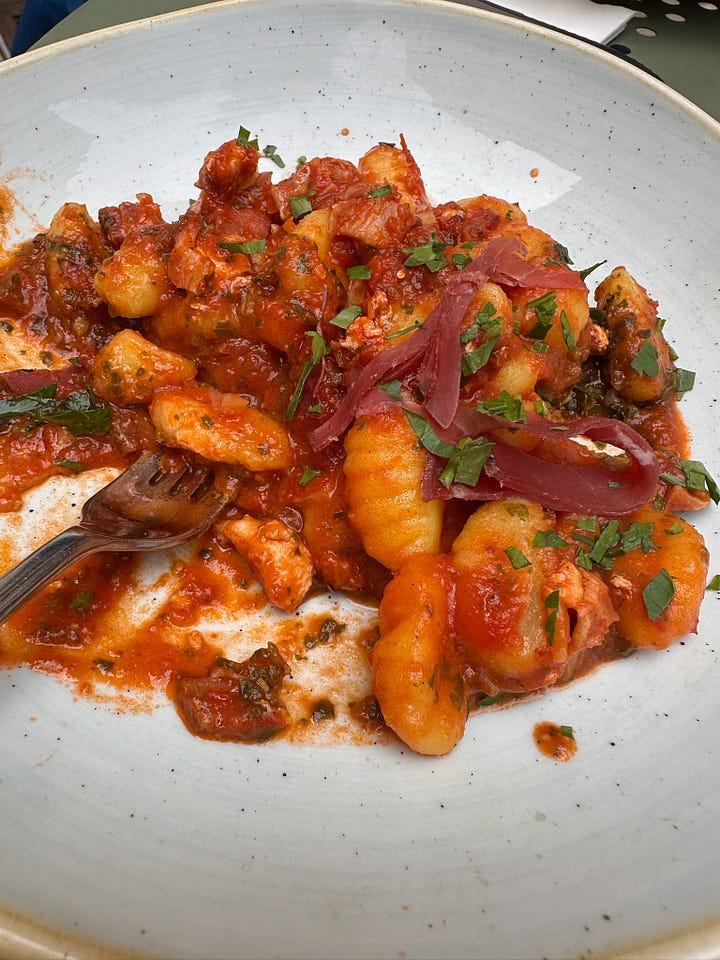

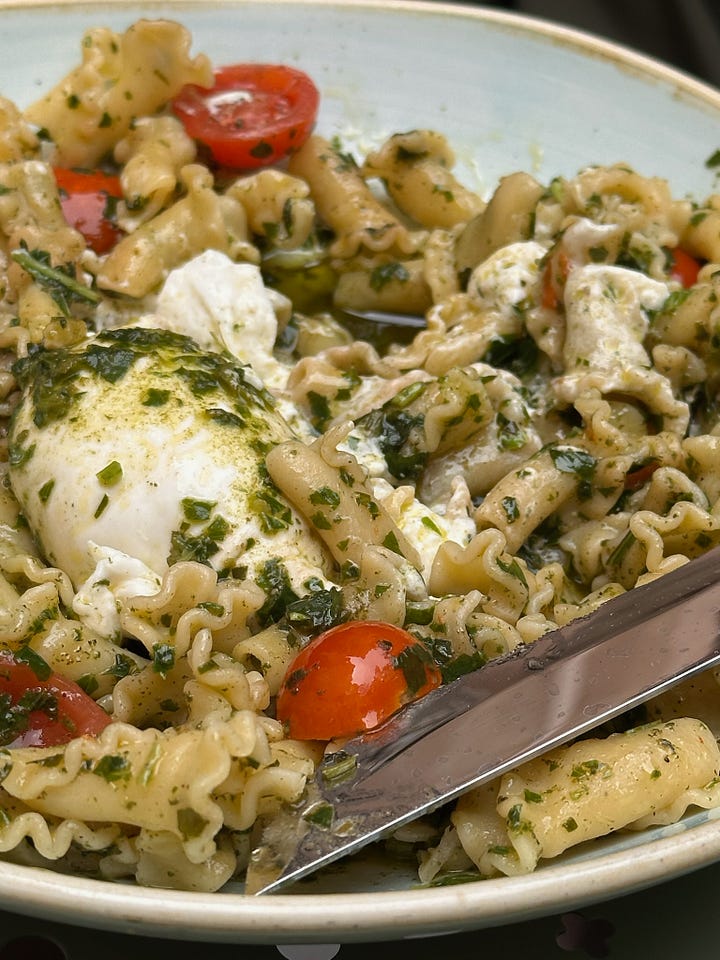
In fact, our very first meal on the island was pasta. It was the best pasta of the trip (which we found funny since we had it in Corsica and not Italy).
We continued this delicious pasta journey with a pasta salad appetizer in the quaint seaside town of Propriano. We saw it on the menu and immediately knew that we’d like it.
No surprise we were right. The pasta salad hit the spot. It was dressed in basil parsley oil, which is lighter than pesto, but adds a ton of flavor along with dill pickles (immediately yes), walnuts, and creamy burrata. The simplicity of the ingredients also made it a perfect meal to recreate at home.
At this same restaurant, we also noticed the server going back and forth with trays of large spritz-looking drinks. Our eyes immediately went to the bubbles and aperitif cocktail. You know how much we love a spritz.
Turns out, the drink is called a “Capo Spritz” and you can order them in either “rouge” or “blanc.” We opted for the rouge (which looks kind of orange if you ask us).
Capo Spritzes are made with one part Mattei Cap Corse (the aperitif that comes in red or white, hence the rouge and blanc options) to two parts sparkling Casanova Moscato and lots of ice. The rouge spritz is citrusy, a little bitter, and served with a slice of orange. The blanc version is sweeter, more floral, and served with a slice of lemon.
Upon our very first sip, we were hooked! We absolutely needed to recreate this when we got home… another spritz for the arsenal. Turns out, Mattei Cap Corse is not easy to get stateside. If you are in Chicago, they have the Blanc version at Binny’s. If you can’t find it near you but are still committed to trying this drink, there are many available options to purchase it online. Or here are a few recommended alternatives we found online that are more accessible:
Cocchi Americano offers a similar bittersweet taste to Cap Corse. Both have a base of white wine and are quinquinas, which means they are fortified (adding a distilled spirit to a base wine) and flavored with quinine (which adds the bitter taste) among other botanicals.
Lillet Blanc has a light golden color with a similar but less strong flavor compared to Cap Corse Blanc.
Bonal is most comparable to Cap Corse Rouge, and is earthy, acidic, and bitter.
For the bubbles, the traditional Capo Spritz uses sparkling Cassanova Moscato. Another thing we can’t seem to find, but luckily, a good semi-sweet sparkling wine will do the trick just fine!
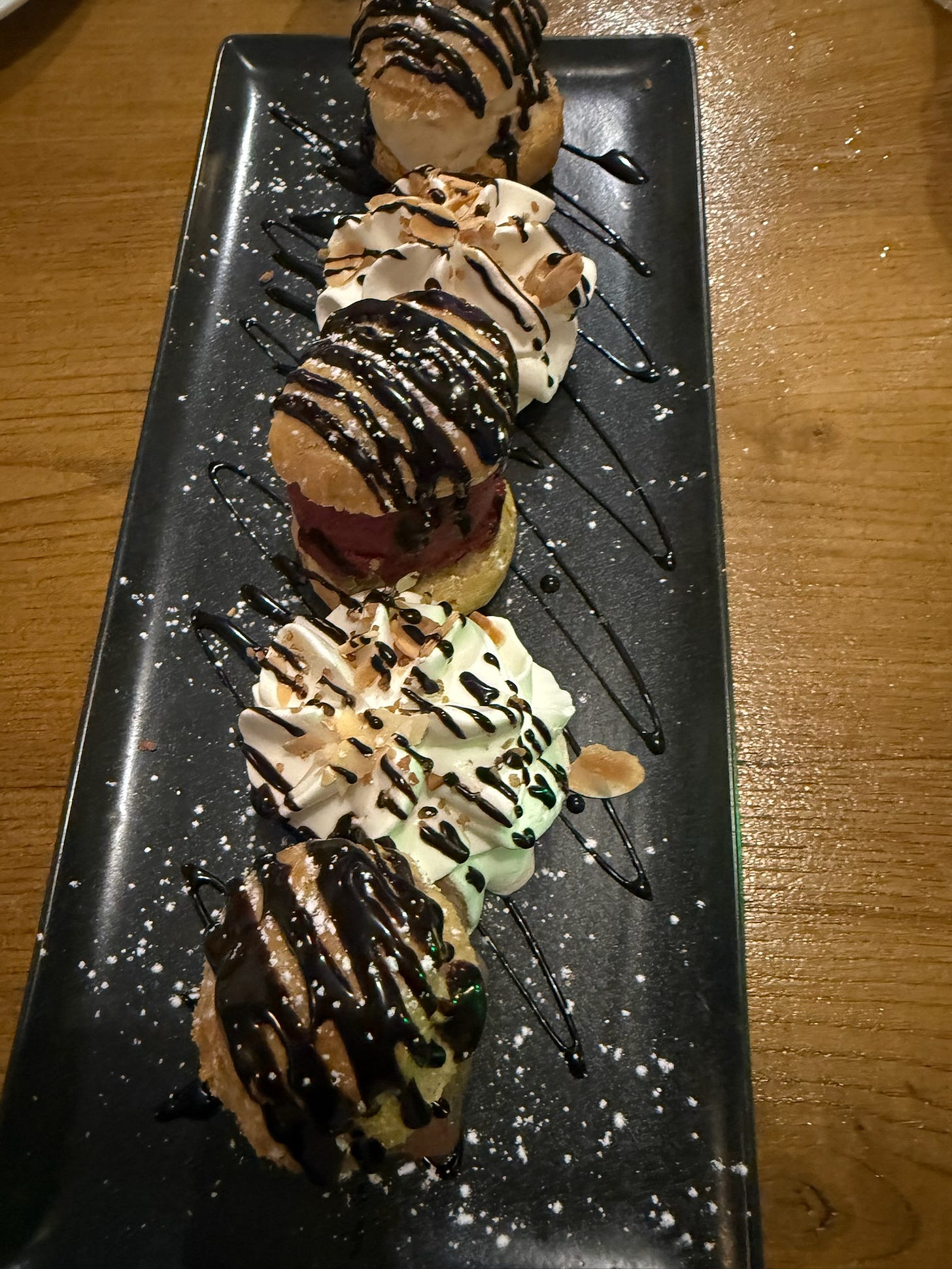
Our next memorable meal in Corsica was during our first afternoon in the capital, Ajaccio (also Napoleon’s birth city). We were starving, we were tired, and when our hotel recommended a lunch spot nearby, we went straight there, no questions asked. The rustic islandy seaside restaurant, Cabanon Blue, like the city itself, is very local (not an American tourist in sight). As it so happened to be Mother’s Day in Corisca, every seat was filled with families having their Mother’s Day brunches. The menu was completely in French, super simple, and written on a blackboard. We noticed most people were ordering grilled meat kebabs on a stick, fresh fish, pasta, and salads, so naturally, we got one of each.
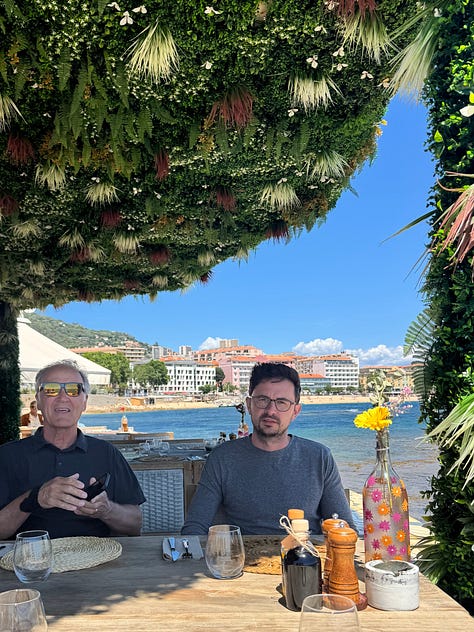
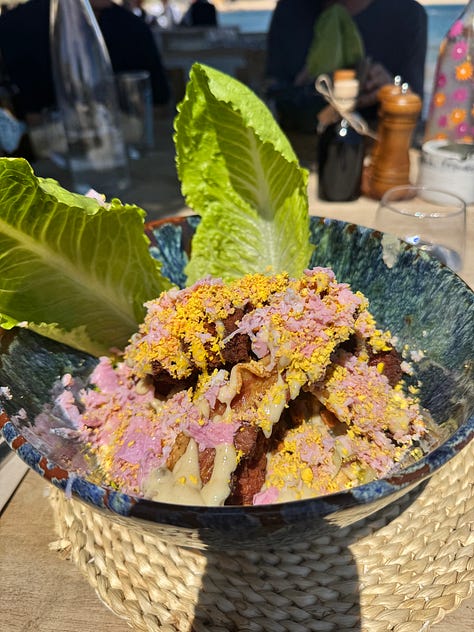

The standout was the massive Caesar salad. Unlike what we are used to at home, the Caesars in Corsica (we loved this one so much we tried another the next day) are topped with hard-boiled eggs and crispy breaded chicken.
We enjoyed this meal with a Capo Spritz- blanc (or two 😏 ).
Luckily, we booked a reservation at our hotel, Hôtel Les Mouettes, for dinner since we read that it was very good and popular! The reviews were true, we loved our meal! And our wine!
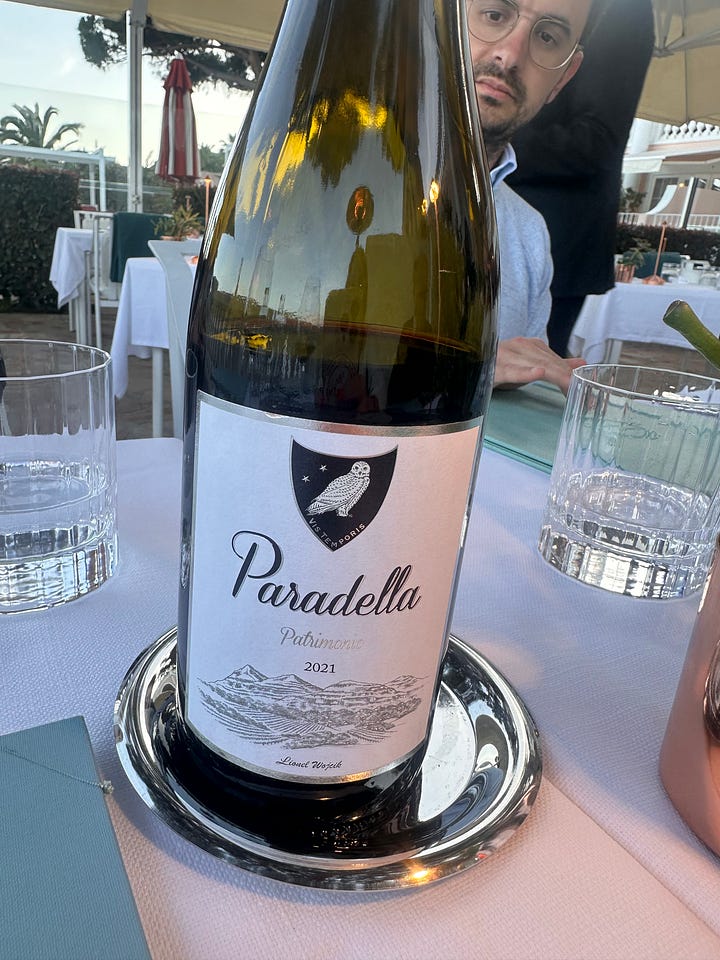

We ordered a delicious Corsican wine, Patrimonio by Domaine Paradella, which is owned and run by a native Corsican who also manages a vineyard in France that was once owned by his father. The wine was balanced and smooth and paired well with our meal. We liked it so much we found some at a local store, bought a bottle to drink there, and a few more to take home!
In addition to the wine, our favorite item, surprisingly, was the amuse-bouche. It was a tasty little pissaladière, which is a kind of pizza/tart from the South of France. This one was topped with caramelized onions, olives, and anchovies. It was the perfect little treat to awaken the palate and wet our whistles.
To make it easy to recreate at home, we decided to use store-bought pizza dough. We recommend the Ancient Grain dough from Whole Foods or the regular pizza dough from Trader Joe’s.


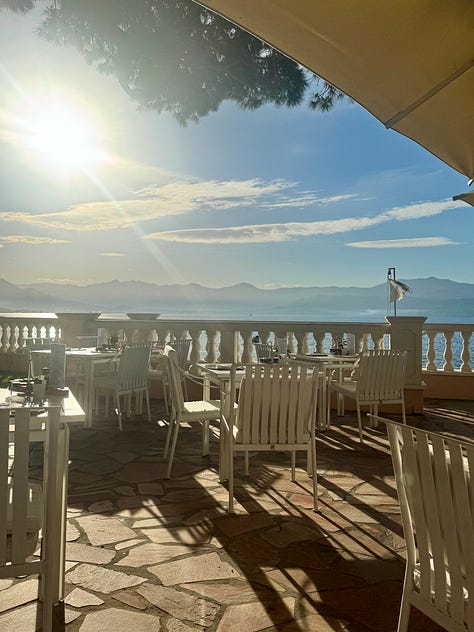
On our very last night in Corsica, we spent it in true Corsican style with a charcuterie picnic on our room terrace. Charcuterie is a staple of the island's food culture, and Corsica is known for its cured meats from free-range pigs that eat acorns and chestnuts, and soft, mild goat cheese, which is often served on a board with bread. We hit up a few nearby markets, got fresh baguettes (just like in mainland France, everyone in Ajaccio has a baguette in hand as they walk through town, our favorite kind of culture), a couple of local cheeses, two types of cured meats, and a bottle of our Patromonio wine. 10/10 meal.
We were so happy with it that not a single one of us remembered to take a photo!
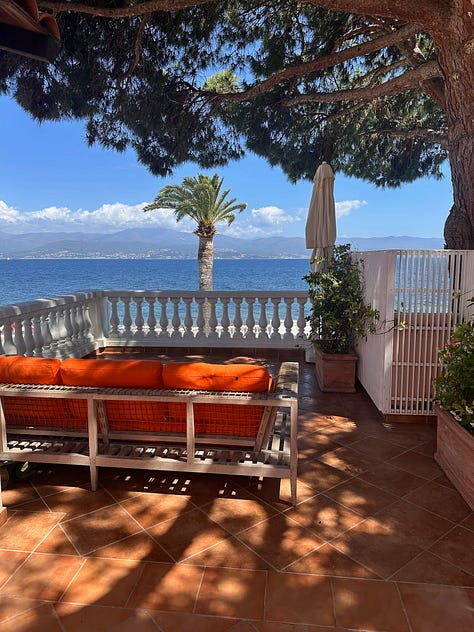
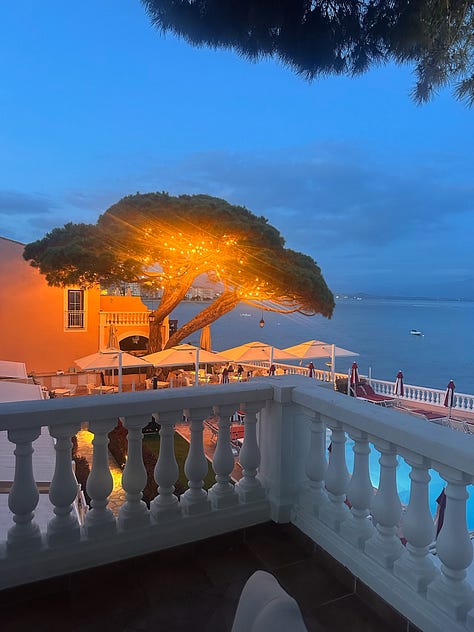
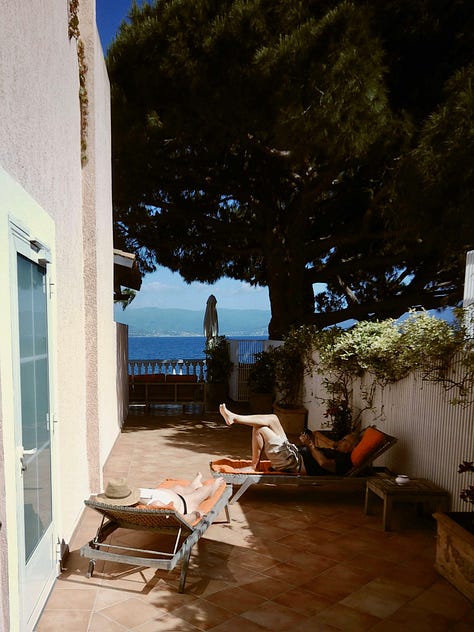
All in all, we had a wonderful trip to Sardinia and Corsica, full of new memories and a lot of culinary inspiration. 👩🏻🍳 🤌🏻
Oh, one last thing! We had a 24-hour layover in Paris and decided to use our time wisely by getting a butter, ham, and pickle baguette and hitting up the skincare aisle of a French pharmacy. We scoured Reddit and found Le Petit Vendôme mentioned more than a few times as having the best sandwiches in the city. Well, we can’t say we’ve had every baguette sandwich in Paris, but we can say the one at Le Petit Vendôme was the best one we’ve ever had.
FYI: WE WILL BE SENDING OUT OUR 4TH OF JULY DIGEST ON WEDNESDAY!
THANKS FOR READING!
Cheers 🥂
Hil & Nat
Don’t forget you can access the entire recipe library with all your favs here.






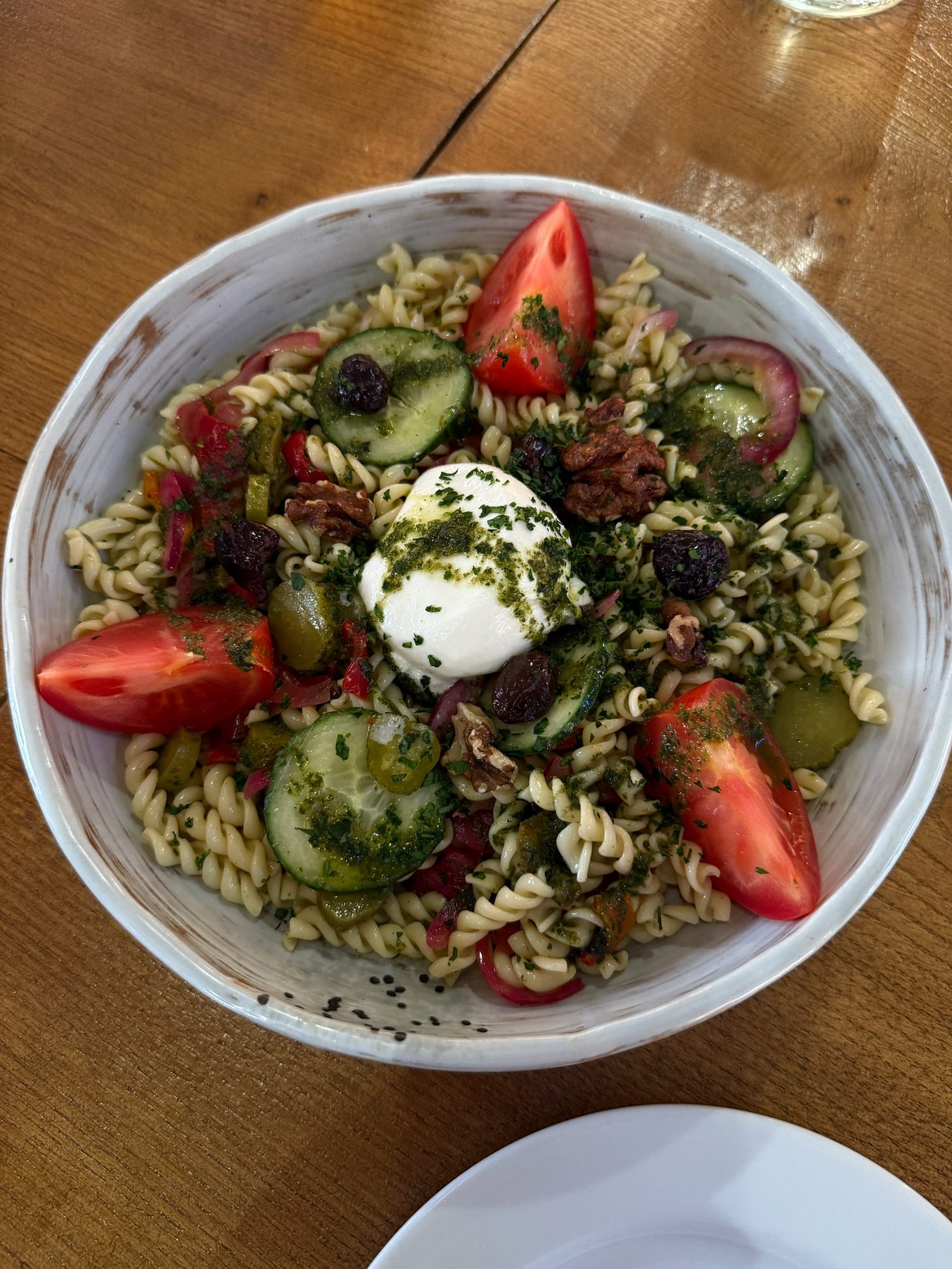

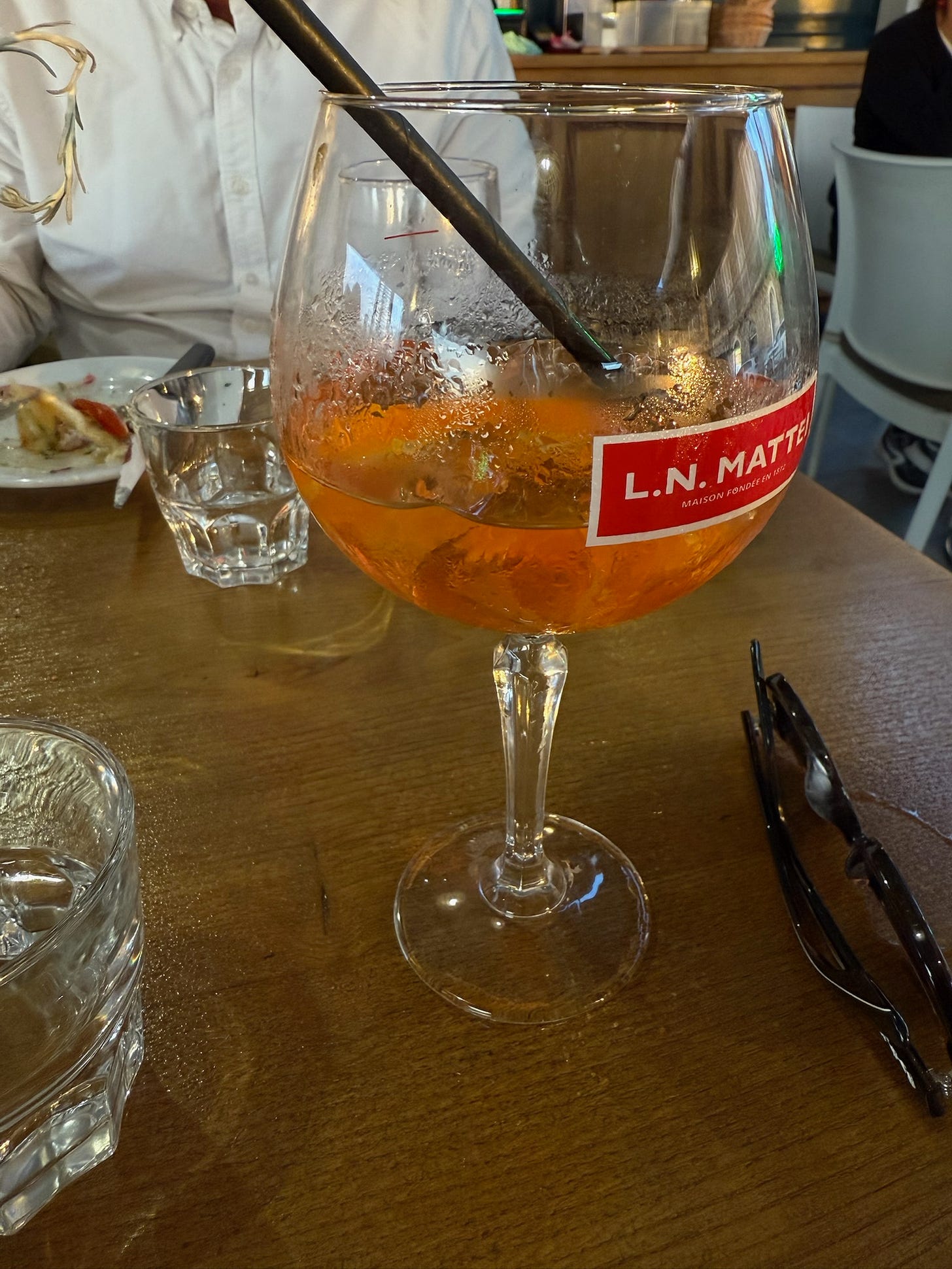

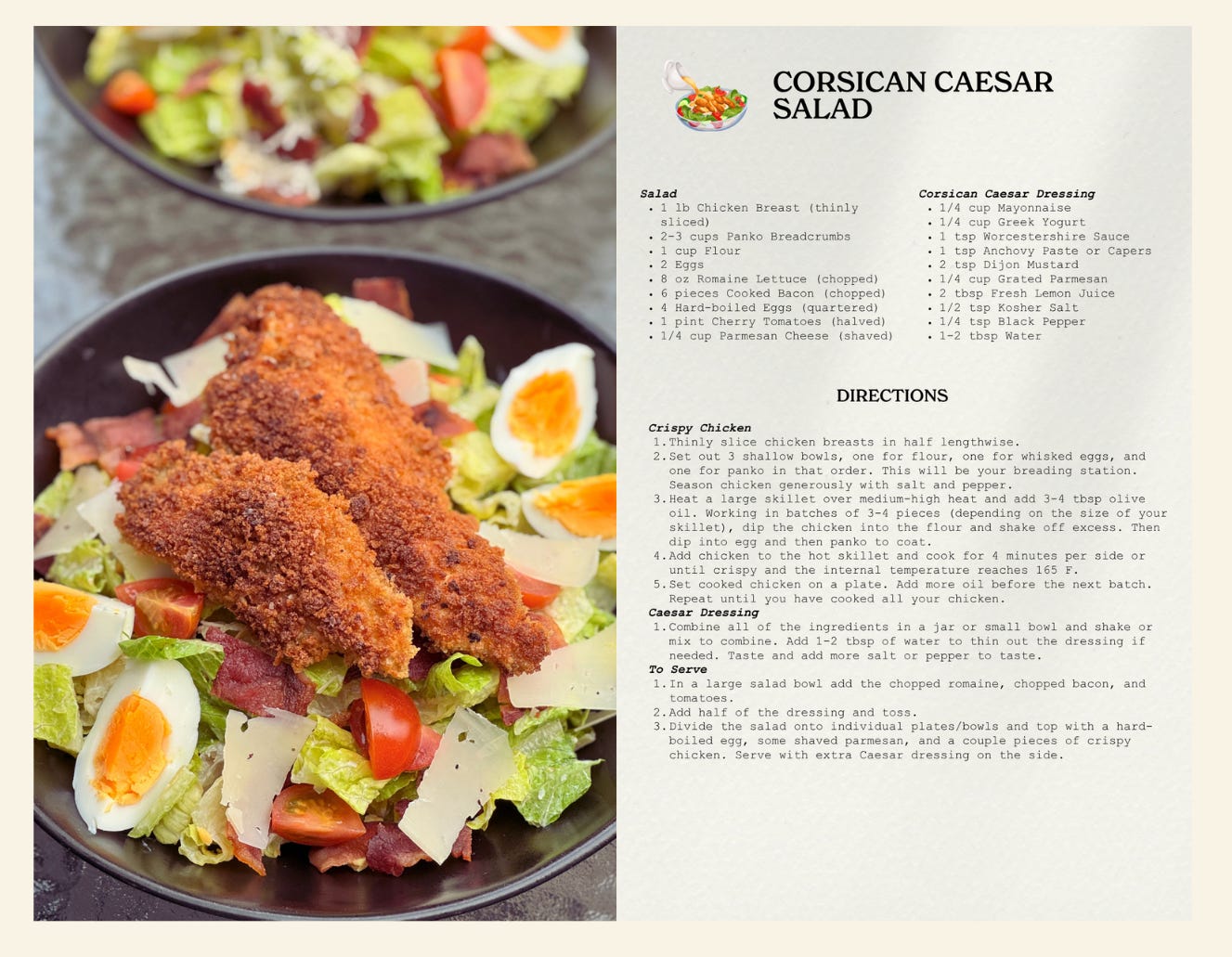
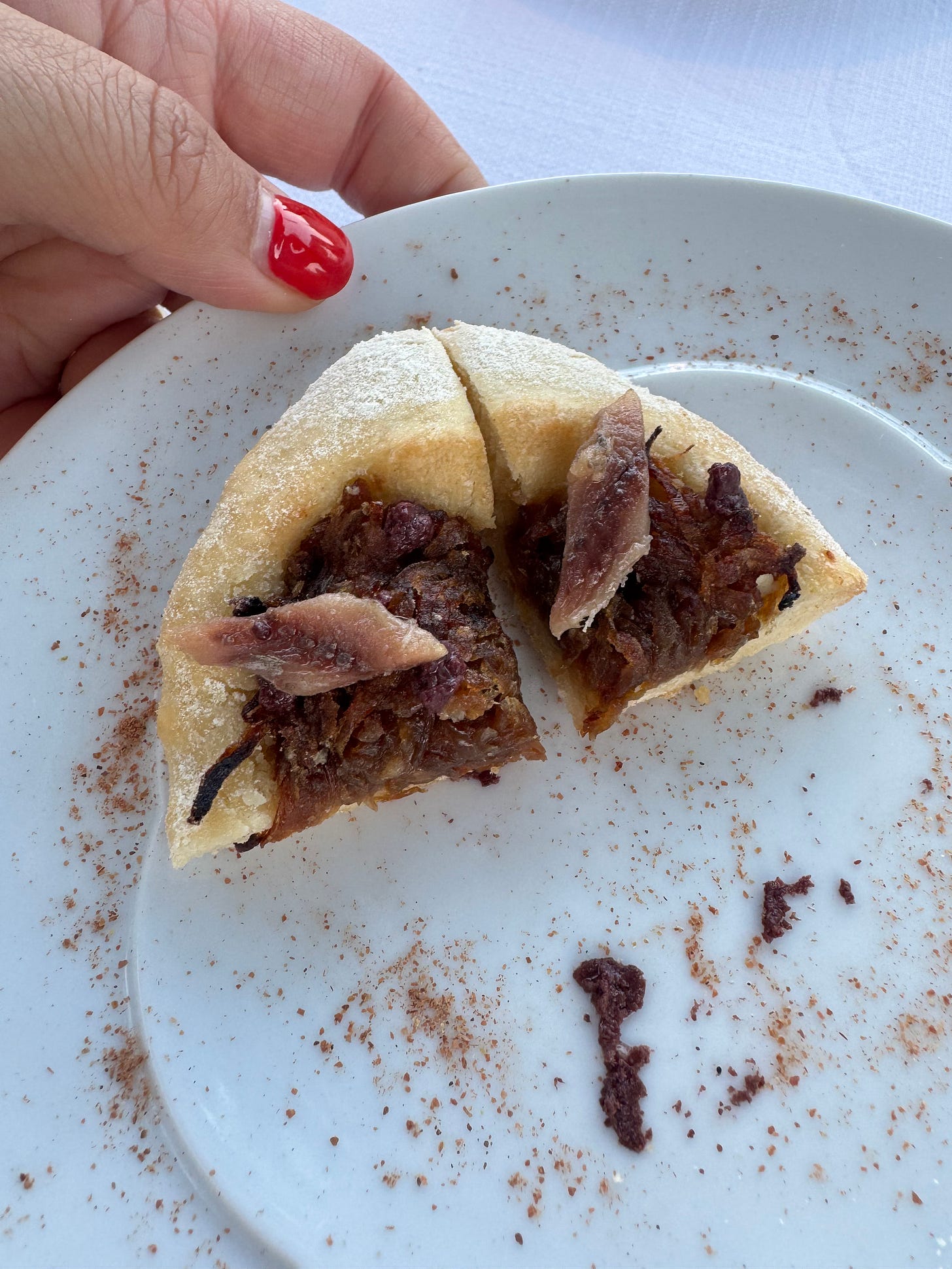

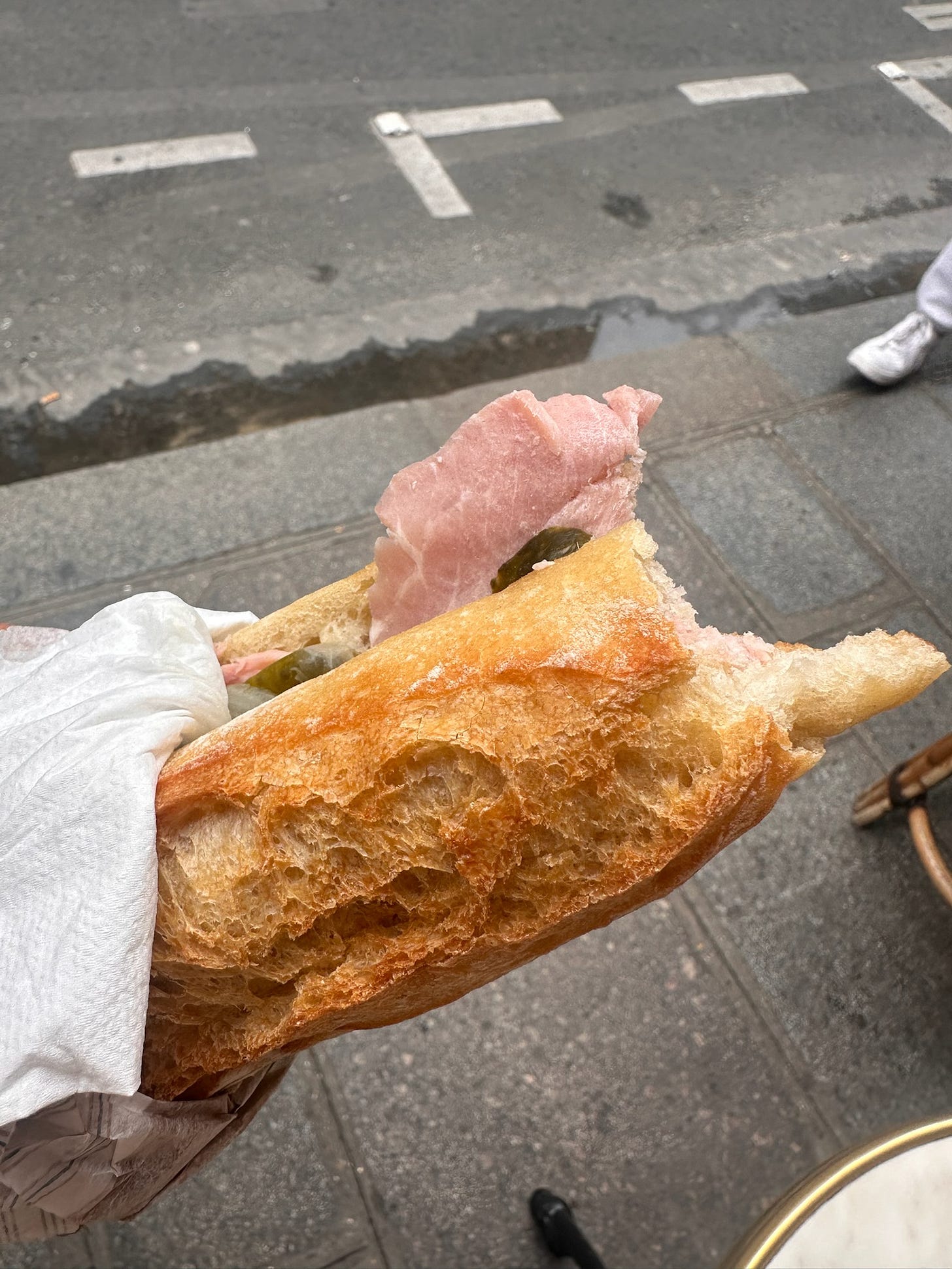
Love how you incorporate history of places you have been to along with family history. Love what you are doing. Keep on going!
I don’t know what I love reading about more, the culture or the food and drink! Thank you!